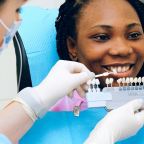
Fungal infections: The most common types and how to avoid them
Anyone can develop a fungal infection, also known as mycosis, but there are a few areas of the body that are more prone than others. There are literally millions of different types of fungi out there and most of them are harmless but certain types that cause infection. Sometimes, a naturally occurring fungus on the human body multiplies more than necessary, other times, an area of your body is colonised by a foreign fungus, both of which lead to infection. Fungal infections are contagious and can spread to other people. Here are some common ones to look out for and measures you can take to avoid getting a fungal infection.
Athlete’s Foot
Whilst athlete’s foot most commonly affects the feet, it can also develop on hands and nails. Also known as tinea pedis, athlete’s foot causes itchiness, stinging, and burning in the affected area. You may also see cracks, peeling skin, and blisters forming, usually between the toes. It is caused by a fungus that thrives in warm, damp areas, which is why the preferred breeding ground is usually between the toes. True to the name, it is fairly common in athletes and can be passed from person to person through contaminated surfaces like shower floors and public changing rooms.
Jock Itch
As most fungal infections occur in warm areas of the body, it is no wonder that the groin area is another common location for a fungal infection. Jock itch, also called tinea cruris, can affect your groin, buttocks, and inner thighs, and can cause redness, itching, burning, and flaking skin. Usually, the symptoms worsen when you exercise, and it is more commonly experienced by men.
Ring Worm
Also referred to as tinea corporis, ringworm is a fungal infection that affects your skin and scalp. Much like athlete’s foot and jock itch, it is a fungus that is particularly keen on areas that are warm and damp. It usually begins as a rash, and then as it progresses, you will notice it spreads to form red rings on the skin. Some people also experience blisters and baldness, and you’ll be pleased to know it actually has nothing to do with a worm at all; this only references the shape of the rash.
For detailed information on Ring Worm, visit the Patient website. It has more information on catching the infection, the symptoms, and treatment. All articles are written and reviewed by doctors, so are a reliable source of trustworthy medical information, covering a huge range of diseases, infections, and treatments for all kinds of medical problems.
Yeast Infection
These are caused by the fungi Candida albicans, which can affect your mouth, skin, gastrointestinal tract, urinary tract, and genitals. Small amounts of this fungus does live on everyone, but when it multiplies too much, it can cause an infection known as a yeast infection, commonly referred to as thrush. Anyone can develop oral thrush in their mouth or throat, which looks like white patches, and genital thrush is experienced by a huge number of women. Generally, all types of thrush cause pain, itchiness, swelling, and redness, and can be incredibly uncomfortable.
Toenail Fungus
As expected, toenail fungus, or tinea unguium, affects toenails, fingernails, and nail beds. To begin with, you may notice a small spot of discolouring on your nail. If left untreated, this then grows to change the shape and colour of your nail, also causing it to become thicker and more brittle. If you notice streaks under your nail that are white or yellow, your nail lifting off the nail bed, flaky or crumbly nails, or your nails becoming thicker than usual, it may be the signs of a nail fungus.
Avoiding Infection
There are a few environmental factors that can increase your risk of catching a fungal infection, and knowing these means you can take steps to help prevent infection.
Dampness and humidity are common causes, so make sure you wash after sweating or exercise and always dry off properly, especially in areas that are prone to infection like the groin and in between your toes.
Sometimes, damage to your skin or nails can result in infection, so make sure you clean wounds properly. Avoid walking in public swimming pools and baths barefoot, as this is a prime place for the spreading of fungal infections.
General good hygiene is key to avoiding fungal infections: keep your skin dry, wash your hands often, don’t use other people’s personal care products or towels, wear shoes in locker rooms and public showers or pools, and wipe all your gym equipment before using it.
Fungal infections can cause discomfort and pain, and they can take a long time to treat effectively. Take measures to prevent infection from occurring, but if you do think you have a fungal infection and over-the-counter treatments have not worked, it is best to visit your doctor so you can get the appropriate treatment.











